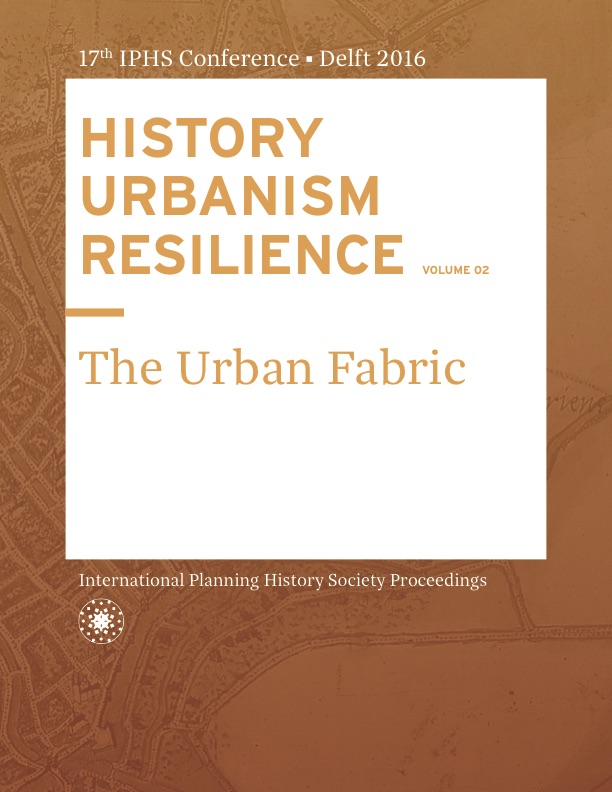Towards Critical Resilience: Learning from the History of Post-Trauma Urbanism
DOI:
https://doi.org/10.7480/iphs.2016.2.1692Abstract
As we begin a conference entitled “History Urbanism Resilience,” I see my role as articulating some of the ways that the concept of “resilience” contributes to the history of urbanism—and to explore how the history of urbanism helps complexify our understanding of resilience. Resilience as a term has become both increasingly ubiquitous and increasingly contested. My remarks today will both explain this and, ultimately, defend the value of the concept--as long as we approach it critically. A first observation: putting the word “Resilience” in the title of the IPHS conference seems to have worked. The word appears in the names of 12 different conference sessions, and 35 separate papers use the word in their titles. So, either “resilience” is an inspiring frame for our thinking, or many of us are just extremely dutiful--or strategically adept--at providing conference organizers with what we think they want to hear. I suspect that there is some of each at work here. More importantly, this combination of utility and malleability accounts for much of the burgeoning appeal that the term “resilience” seems to have. Are we all talking about the same thing? Probably not, though there is certainly some reasonable degree of commonality. A quick perusal of the titles in the IPHS conference program suggests that we are, collectively, applying the idea of resilience to architecture, communities, and metropolitan form, and that it is applied in many contexts of social, environmental and political change, frequently including sudden disruptions caused by disasters or warfare.
In the spring of 2002, following on the 9/11 attacks in the United States, a colleague and I ran a semester-long colloquium that we called “The Resilient City: Trauma, Recovery, and Remembrance.” We wanted to look back at a variety of traumatic urban events from around the world to see how governments and their citizens had responded. How did recovery from traumatic events get conceptualized and how did these events get memorialized? Did it matter whether the cause was earthquakes or floods or wars or terrorist attacks? In other words, what could we learn from the history of post-traumatic urbanism that might help us conceptualize what might happen post- 9/11? My colleague Tom Campanella and I commissioned a series of papers exploring how cities (and their citizens) had historically recovered from sudden traumatic events—not just from terrorism, but from other abrupt events such as earthquakes, tsunamis, and wars. We quickly learned that, while it was possible to chart something called “disaster recovery,” that concept was hardly straightforward. In the past 200 years, virtually every large city in the world that experienced a disaster or war seems to have been rebuilt, no matter how extreme the level of destruction or loss of life.

